|
|
|
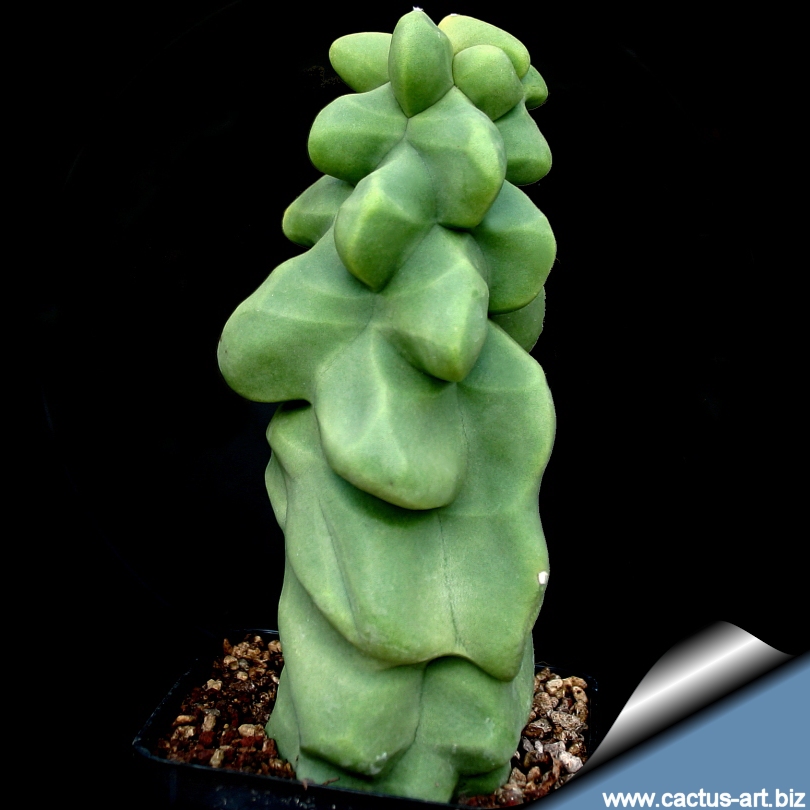
Occasionally cacti show abnormal growth forms - called "monstrous"
forms, uncharacteristic of the species. An interesting example of this
is Lophocereus schottii forma mostruosa (Totem Pole Cactus) a very
interesting, easy, slow growing and quite uncommon plant in collections
|
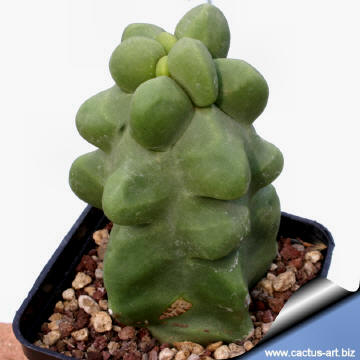 |
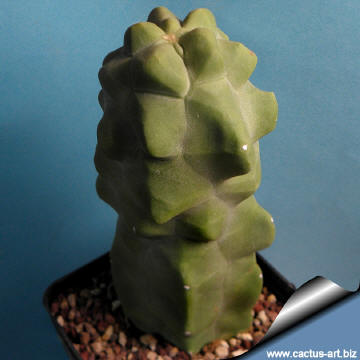 |
|
. |
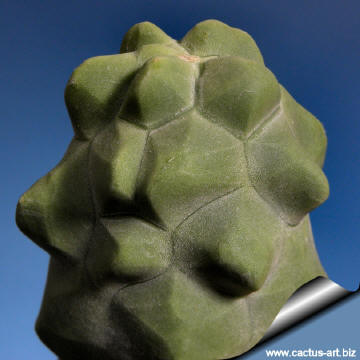 |
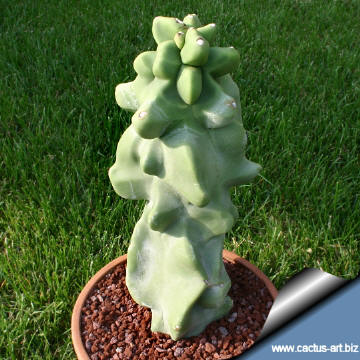 |
|
. |
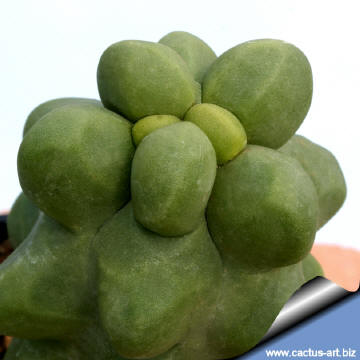 |
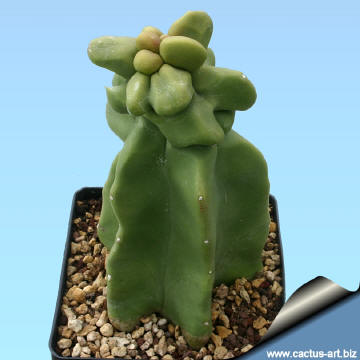 |
|
|
|
Photo of conspecific taxa, varieties, forms and cultivars of
Lophocereus schottii .
|
|


Advertising
|
|
|
|
|
Family:
Cactaceae (Cactus
Family) Origin:
Lophocereus schottii is native
to the desert regions of mainland
Mexico and the Baja California peninsula of Mexico.
Small populations also occur in the extreme south of Arizona.
The monstrous form is restricted to a small area NE
of El Arco, about halfway down the Baja peninsula.
Habitat: L. schottii tends to
grow in colonies in favourable locations on rocky hillsides.
It grows
mainly on alluvial plains in dry gravely soils and in desert riparian
environments, but its northern limit in southern California
can get frosts that can occur on the flat sites where it grows.
Here plants
are smaller in size than their more southerly counterparts.
Reproduction
in this part of its range is predominantly asexual and occurs
either by
the dispersal of stems in the immediate vicinity of parents, or
by the
long-distance transport of detached stem pieces downstream by
floodwaters. Wild plants are heavily weathered and badly marked with
just the newest growing tips in good condition.
L. schottii mostruosa is a naturally occurring mutation,
which, although sterile, continues to survive in the wild. This growth
form occurs naturally in at least two wild populations in a very soft
sandy and gravely soil. In these two locations the plants persist
because stem sections break off periodically and root along the sides to
produce new plants.
Ecology: L. schottii has
recently been found to have a mutualistic association with a moth, which
pollinates the small flowers and lays its eggs in them so that the
larvae can develop by feeding on the fruit tissues.
DESCRIPTION:
Lophocereus schottii is a
slow-growing usually trunkless cactus that forms numerous tall,
ascending, columnar stems which branch at the base in a candelabra-like
arrangement. Stems have a waxy bloom on the surface and reach a height
of 3-4 metres (but can grow up to 7m high) and are 10 to 12cm in
diameter. They have five to nine widely-spaced ribs. One of the most
distinguishing features is that the tips of the mature, taller stems are
covered with about twenty sharp long, hairlike, grey bristles. In
contrast to the long spines at the tips of mature stems, the juvenile
plants have only about five short conical spines Areoles on the bottom
part of the stems are woolly, oval and bears white wool. This species
blooms in the apical 'hairy' part of the stems. Flowers are nocturnal,
open at dusk and continue until early morning when the sun burns them
out. They are 3-5 cm long, greenish white on the underside and pinkish
white inside, and emit an unpleasant odour. One or several flowers are
produced from each areole during most of the year, mainly from April to
September. The edible fruits are as red as ripe strawberries (with a red
pulp), and are seldom seen. Occasionally the ends of stems will spiral a
little or dramatically in a right or left hand manner Such top cuttings
are much prized by enthusiasts, fetching high prices.
Lophocereus schottii f. mostruosa
This is a genetically stable mutation with variable,
irregularly shaped ribs with raised, tubercle-like, knobby-looking
swellings along the stems, and few (if any) spines or bristles. Stems
are ascending, slim, lightly
pruinose, and also branch just from the
base and occasionally at higher levels, reverting sometimes to normal
species growths. Some stems reach 6m, but
they usually remain smaller (from
2 to 3m tall). The areoles are few and insignificant and flowers (rarely
seen) are pink, seeds virtually unknown.
In habitat and cultivated specimens, the stems mark quite badly
with age,
due to weathering and old age.
|
|
|
|
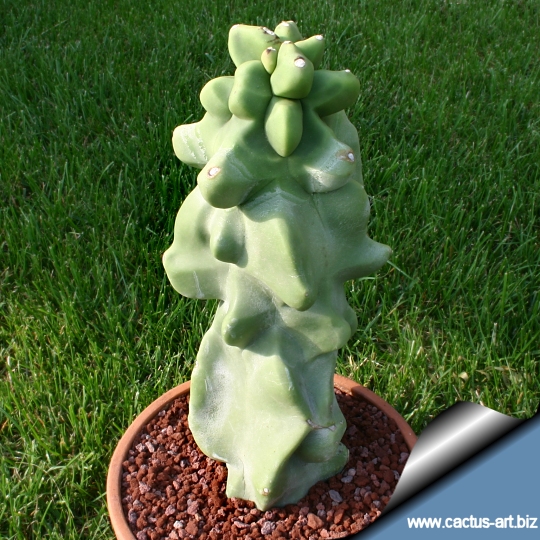
Cultivation: This species presents no
problems in cultivation and will do well in a sunny spot in a cactus
house. These plants will tolerate extreme sun and heat, but not extended
periods of frost. They can survive to a minimum temperature of -9°C (for
Arizona clones), but the growing tips need protection. The monstrous
form is more frost sensitive and should not be
kept
at less than -4°C . They
will tolerate severe drought if they have a large colony of stems. Grow
them in rich, porous, sandy soil, and let their soil dry out between waterings. If potted, repot in the spring,
if their roots become cramped.
Generally, they should be repotted every other year in order to provide
fresh soil. However, this doesn't necessarily mean they'll need larger
containers. Fill about a quarter of the pot with broken crocks, gravel,
etc. to promote good drainage. After repotting, do not water for a week
or more. The monstrose plants enjoy a
warm sunny environment and for more speedy growth a light position on a
higher shelf with light feeding and rainwater given to the bottom of the
plant will ensure success, especially with rooted detached branches,
which do well in these conditions. Often plants can be seen with a root
or two projecting from a lower stem. Plants in cultivation will begin to
get a bit tatty after several years, and if you wrap an offset in newspaper
and send it to your friend through the post, it will probably
get marked
anyway.
Some enthusiasts sow many seeds of this plant in the hope that a
monstrose seedling will appear. Finally, the greatest problem that you
will ever have with this very interesting plant will be finding one to
buy in the first place.
Multiplication: L. schottii can be increased by seeds or
cuttings. L. schottii mostruosa
does not apparently flower or seed. All
specimens also in cultivation must at one time have
been propagated vegetatively, unless a species plant now and
then yielded a fasciated seedling. It can be increased by
cuttings, which will take root in a minimum temperature of 20° C.
Cuttings of healthy shoots can be taken in the spring and summer, Cut
the stem with a sharp, sterile knife just above a bud or shoot (a 7-10cm
long tip or branch is most suitable for propagation).
Leave the cutting in a warm, dry place for a week or weeks
(depending on how thick the cutting is) until a callus forms over the
wound. Once the callus forms, the cutting may be inserted in a container
filled with firmed cactus potting mix topped with a surface layer of
coarse grit. They should be placed in the coarse grit only; this
prevents the cut end from becoming too wet and allows the roots to
penetrate the rich compost underneath. The cuttings should root in 2 to
6 weeks.
|
|